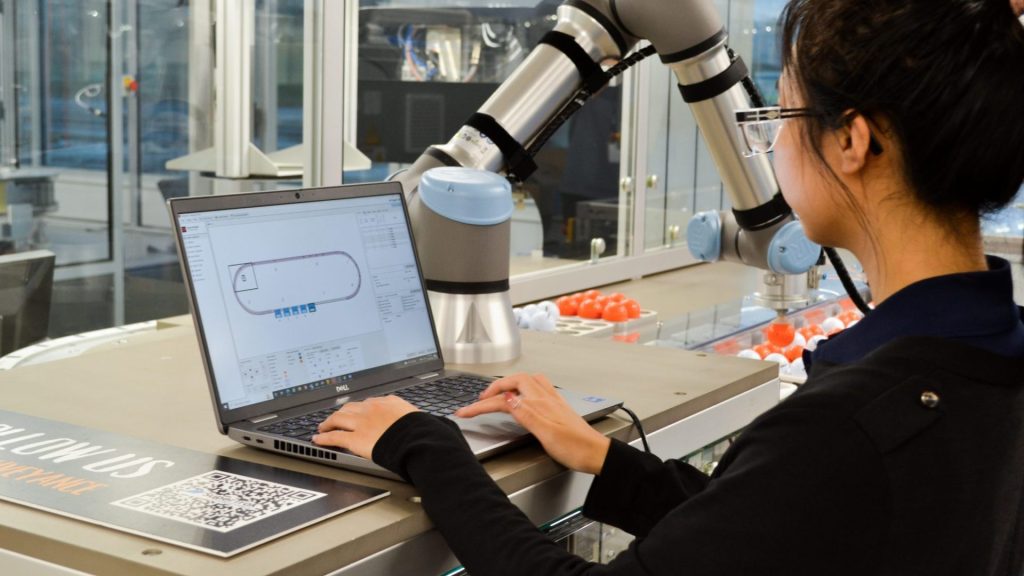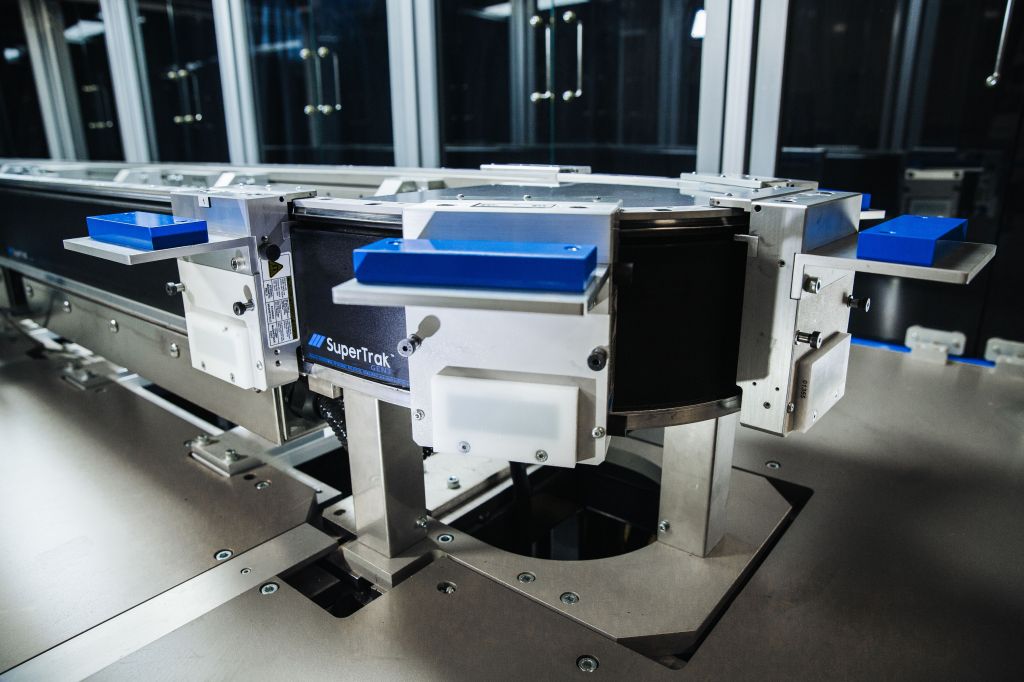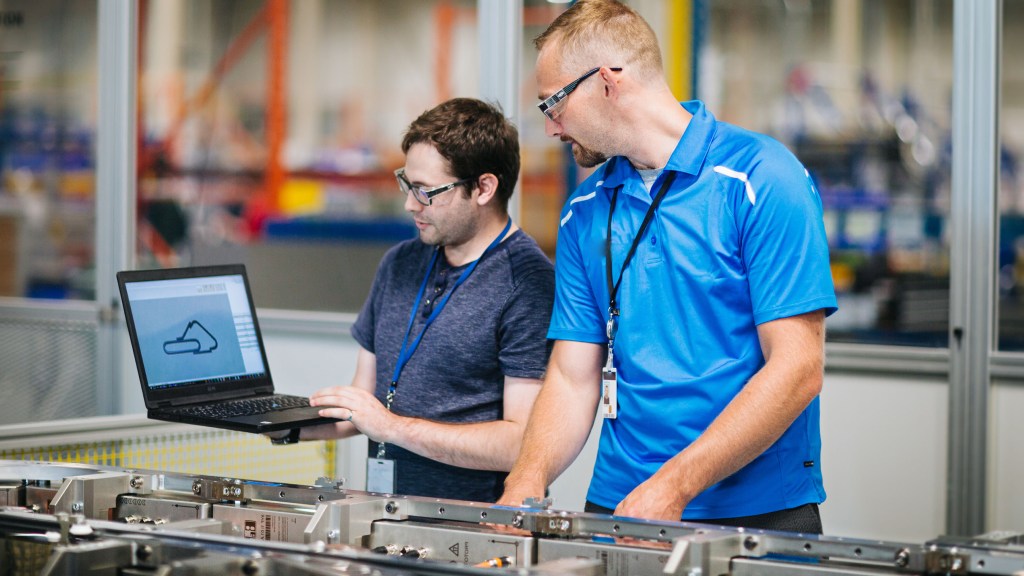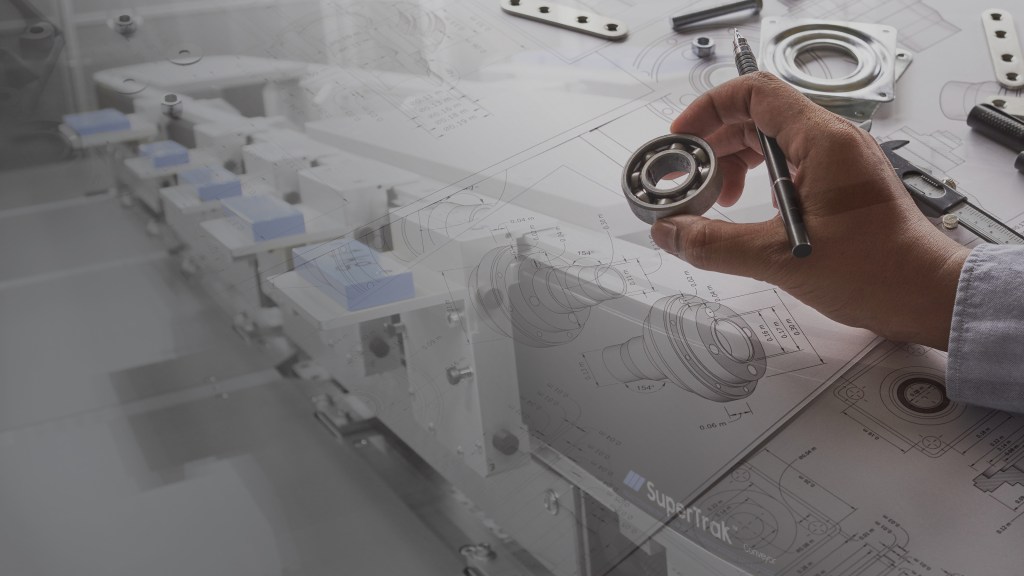Simulations support better automation design and performance by enabling system designers to create a project from scratch without any of the heavy lifting involved in hardware or software development. Simulations offer the opportunity to virtually map out projects to their exact system specifications.
Simulations are beneficial for designing asynchronous automation as it’s a fast and easy way to identify process inefficiencies and adjust those to ensure optimal performance. Creating simulations early in the design phase helps ensure the system uses as little tooling and as little factory footprint as possible.
You may be wondering whether simulations are necessary for a successful system design, and the answer is – it depends. Traditional conveyance is fairly straightforward; it uses synchronous motion to move parts from station to station. But every step in the process has only one option and process time is dependent on your longest station, so there’s no flexibility in the manufacturing process. For more complex assembly processes, Smart Conveyance, on the other hand, utilizes asynchronous motion and unlocks a number of benefits that help create a more efficient automation system. But designing and programming an automation system that uses asynchronous motion can be complex, and integration can require a high degree of skill to meet tight deadlines. This is where simulations can be incredibly beneficial.
How to Get Started with Simulation
Asynchronous motion enables system designers to decrease the overall system complexity, but getting to that point can be tedious without the use of a simulation first. Accurate motion simulations early in the design phase remove engineering complexity and allow system designers to optimize design and performance for a better ROI. Users of SuperTrak CONVEYANCE™ benefit from proprietary TrakMaster™ software to easily create an accurate representation of their system and highlight things such as potential bottlenecks, energy consumption, and overall footprint. Getting accurate motion simulation is the best way to realize the full capabilities of a conveyance system. That’s why it’s important to think about efficient conveyance at the start of your design process.
As a simulation tool, TrakMaster™ software enables users to:
- Optimize performance of their conveyance systems by digitally adding, removing, or reorganizing process stations.
- Contribute to a reduced factory footprint by identifying the least amount of process stations needed prior to implementation.
- Improve their process stations by accurately gauging shuttle-to-shuttle cycle times.
- Realize OEE improvements including increased throughput.
- Drive power-saving and thermal management decisions.
These benefits offered by TrakMaster™ software show users how they can leverage the system’s integrated functionality before the system is even built.
How to Create a Simulation Using TrakMaster™ Software
Simulations provide value at all stages of your automation project from early conception to final adjustments prior to implementation. System designers will gain the most benefit if they start simulations early in the design process to maximize system performance early on. Using TrakMaster™ software, users can easily iterate key variables like the pitch, offset, velocity, and recovery of shuttles. TrakMaster™ software also gives designers the ability to input a top-view image of their factory floor to get a realistic representation of how the final system will look in that space.
Station Simulation
Adjusting simulations because of design changes is easier than ever thanks to the newest TrakMaster™ software 3.0.42 release. A new and industry-leading drag-and-drop feature in the System Layout area allows easily adding and removing stations and, specification of sizes, cycle times, and other parameters. Based on these inputs, the software will automatically create all the motion configurations and targets to simulate the full system.
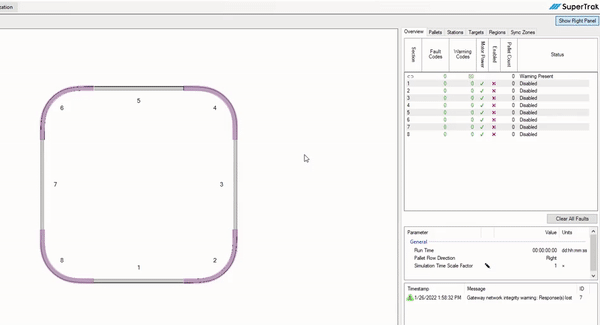
Additionally, many conveyance systems – especially ones that leverage asynchronous motion – include stations with complex configurations. Now, to reach a more accurate representation of system performance, every station or target can be easily configured with a broad set of parameters such as dwell time, variability of dwell time, station preparation time, and number of end effectors.
For example, if you have a manual station in the process, you can adjust its variable dwell time.
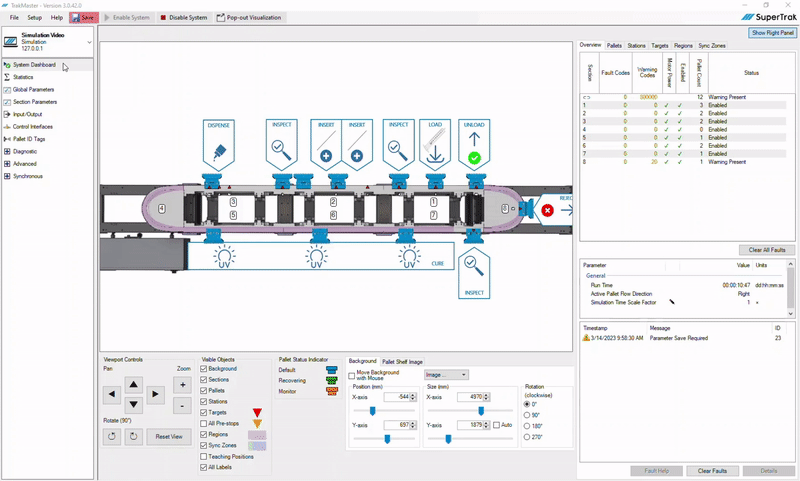
Once an initial system is deployed, adding, skipping, or swapping stations in simulations is simple. This has enormous benefits for businesses looking to adjust how their system is laid out but don’t have the resources or time to manually reconfigure a physical system.
Performance Analysis
Systems built using TrakMaster™ software enable designers to complete a performance analysis prior to implementation. This means that checking for bottlenecks, shuttle-to-shuttle cycle times, and adapting to last-minute changes are all done through simulation, saving time and money and ensuring the system is built the most efficient way the first time.
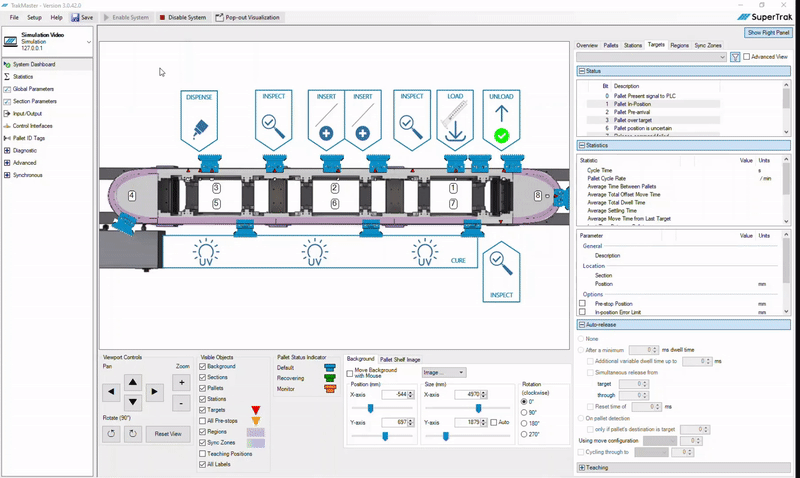
When using simulation early in the system design, factors like factory footprint, power requirements, and the minimum number of shuttles required can all be done ahead of time.
Thermal Simulation Tools
Another less talked about feature of TrakMaster™ software is its machine-learning based thermal model that enables it to simulate the temperature at any given point on your track. This thermal simulation tool intuitively updates as you customize your simulation and add or remove stations or shuttles. This feature helps system designers avoid above-recommended temperatures for their configuration and allows them to incorporate cooling systems when and where necessary.
Work Smarter, Not Harder
While simulation is especially helpful at the start of a design process, there are benefits to be realized at every stage of the automation journey. When designing with asynchronous motion, simulation enables system designers to demonstrate and iterate exactly how an automation system will perform. Iterating in a simulated space saves time and money by making sure your entire system is operating to its full potential. Industrial automation makes processes more efficient – shouldn’t the process of setting that up be as efficient as possible too? We think so.

